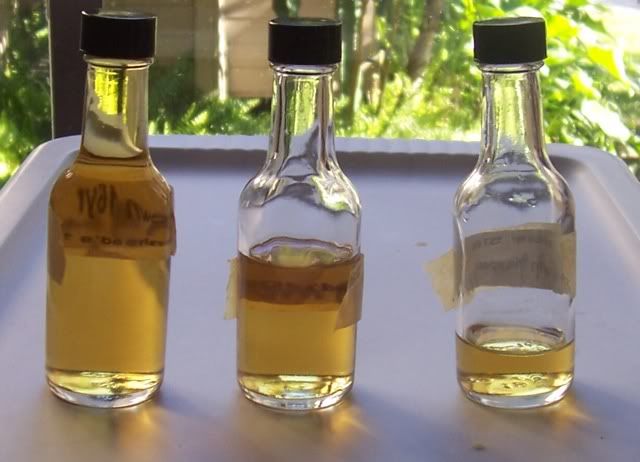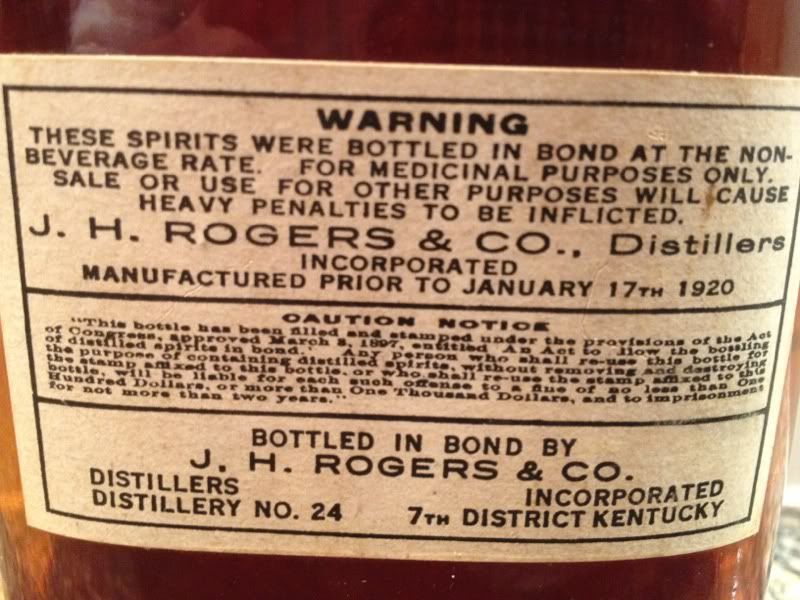Announcement
Collapse
No announcement yet.
Whiskey aficionados
Collapse
X
-
I have no plans to try to open it right now.
Found a bit of info:
The Limestone distillery was established in 1879 by James H Rogers. In 1892, Rogers was joined by Francis H Clarke, his brother-in-law, as general manager of the distillery.
Insurance underwriter records compiled in 1892 suggest that the distillery was of frame construction with a metal or slate roof. The property included cattle pens, 280 ft SE of the still, and a single bonded warehouse. It was of iron-clad construction with a metal or slate roof, 50 ft south of the still.
At that time, it being operated by J H Rogers.
Comment
-
It will certainly be interesting!Originally posted by talisman View PostThat is definitely some VERY special occasion stuff. Awesome.
 Two years ago , I started a little experiment to discern how oxidation impacts whiskey in an open bottle. The query I was addressing was the...
Two years ago , I started a little experiment to discern how oxidation impacts whiskey in an open bottle. The query I was addressing was the...
Assuming it was opened not long after bottling/selling then it's had that small amount of "later" air in there for 90 years.Whiskey Wednesday: Whiskey, Age and Oxygen Part 2
Two years ago, I started a little experiment to discern how oxidation impacts whiskey in an open bottle. The query I was addressing was the age old question of how long your whiskey will last once you crack open the bottle. As I said in that post:

Answering this question is harder than you might think and there are different schools of thought. Once you uncork the seal and pour a glass, you let oxygen into the whiskey bottle so oxidation is a possibility. Just how long such oxidation takes and under what circumstances is not clear.
It is common lore among whiskey fans that once a bottle is half full or less, you should drink it within 18 months to prevent oxidation and a change in flavor. Others, however, swear that whiskey can last for years at a low level and have virtually no ill effects.
So, to test this out, on December 30, 2008, I opened a new bottle of Longmorn 16 and poured it into three mini bottles. One I filled to the top such that virtually no air was left in the bottle, a second I filled approximately half way, and a third I filled to about a quarter of the way full (see picture above).
These bottles have been quietly sitting in my closet for the past two years and two months, and now it has come time to find the results of our experiment. I poured an equal measure of each whiskey into tasting glasses.
I started by tasting the whiskey from the full bottle, just to gauge my taste. This bottle had minimal oxygen exposure so it becomes the control. Part of the reason I chose Longmorn 16 for this experiment is that it's fairly subtle in flavor profile; it isn't strongly peated or sherried, flavors which can cover up many flaws. It is lightly sherried, and its general character is malty and grassy.
Now to the half bottle. The nose and flavor were pretty much identical to the full bottle. I found no discernible difference between the full bottle and the half full bottle.
And finally, the quarter fill. The nose on the quarter fill was much lighter and less forceful than on the others. While the same notes were there, they were much harder to pick up. Upon tasting it, the flavor of the quarter filled bottle was much weaker than the other two. It was lighter in character, and some of the stronger and sweeter notes had dulled, giving way to a base (as opposed to acid) type of taste. Overall, while there were certainly traces of the same flavor notes, there was a lack of dimension and complexity and a general dulling of flavor in the quarter filled bottle compared to the other malts.
I have to say that I am surprised as I had always been skeptical of the theory that whiskey would deteriorate in the bottle over two years, but this one certainly had. I don't want to overstate the deterioration. It was still plenty drinkable, but as I noted, it lacked the sharpness of flavor found in the fuller bottles.
To conclude, it seems that somewhere between a half bottle and a quarter bottle there is a point at which deterioration takes place. While it would take more exacting experimentation to find that precise point (which may well vary based on all sorts of factors), I think it's safe to say that the results of this experiment support the general thesis that it is a good idea not to let a bottle that is much less than half full languish in the cupboard for a two year period.
I guess it's time for me to start draining some of those low fill bottles in the closet.
Comment








Comment